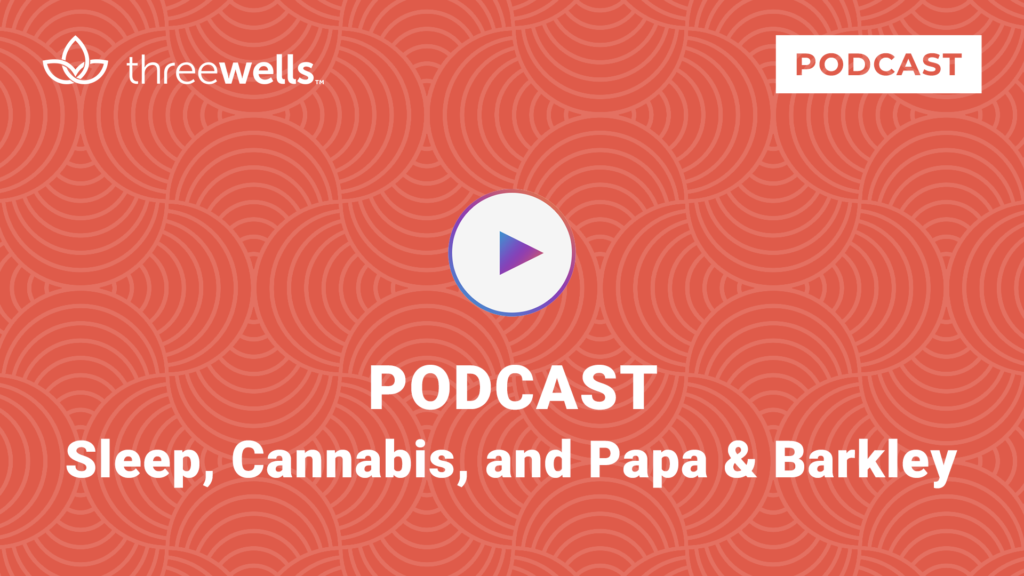Did you know that cannabinoid content (how much THC or CBD is in your medicine) of Indica and Sativa strains is relatively similar? A typical profile may be 99% THC and 1% CBD. In fact, of the two strains, one can be stimulating and one and be sedating. So, what determines the therapeutic difference? It’s the terpene content.
Terpenes are compounds in cannabis that give the plant its distinctive smell. They contribute to the unique and full array of medicinal properties associated with any particular strain. Over 100 have been reported in the plant, but only a few are found in significant concentration. Terpenes are synthesized in cannabis inside glandular trichomes, most highly concentrated in female flowers, as are cannabinoids. A look at these special terpenes can explain many actions of the plant.
Terpenes are quite potent and affect mood and behavior among other actions when inhaled at low concentrations. For an excellent scientific review, read Dr. Russo’s 2011 study which states in part that cannabinoid-terpenes interactions “could produce synergy with respect to treatment of pain, inflammation, depression, anxiety, addiction, epilepsy, cancer, fungal, and bacterial infections.”1
Common Cannabis Terpenes
LIMONENE. This terpene has a citrus aroma and takes its name from the lemon and gives citrus its characteristic scent. It is a monoterpene (10 carbon atoms). It is the second most prevalent terpene in nature.
- Entourage Effect: This refers to the interaction of the plant’s individual constituents in producing synergy, thereby increasing its therapeutic potential. Limonene’s entourage effect is that it assists in the absorption of other terpenoids and cannabinoids through the skin, mucous membranes, and the digestive tract.
- Actions: It is anti-bacterial, anti-fungal, a bronchodilator, and it improves mood to treat anxiety and depression. It relieves heartburn and gastrointestinal reflux, has been used clinically to dissolve gallstones, is an anti-convulsant, and has been shown to destroy breast cancer cells.
MYRCENE. This terpene is resinous and has a green balsamic, musky, and slightly metallic odor. It is a component of the essential oil of several plants including mangos, lemongrass, hops, black pepper bay, cannabis, ylang-ylang, wild thyme, and parsley. It is a monoterpene (10 carbon atoms).
Entourage Effect: It helps cannabinoids and terpenes pass through cell membranes thereby accelerating their effect and increases the saturation of the CB1 receptor.
Actions: It is anti-inflammatory, analgesic (that likely works with the opioid receptor system), anti-spasmatic, antimicrobial, antiseptic, antioxidant, anti-carcinogen, hypnotic, and sedating, leading to the “couch-lock” effect.
LINALOOL has a pleasant floral scent that is found in lavenders, citrus laurels, birch, coriander, and rosewood. It is a monoterpene (10 carbon atoms).
- Entourage Effect: It serves as an antidote to the potential anxiety-producing effect of THC.
- Actions: It is It is anti-bacterial, modulates glutamate and GABA neurotransmitter systems and amplifies serotonin (a neurotransmitter) conferring an anti-depressant and anti-anxiety effect ad stress reliever, has sedating properties, and is also an anti-convulsant.
α PINENE is the most common terpene on the planet. Much as the name suggests, this terpene smells like pine trees (pine oil), appears in conifers and numerous other plants and is highly repellent to insects. It is a monoterpene (10 carbon atoms).
- Entourage Effect: It also crosses the blood-brain barrier very easily, preserving acetylcholine levels, thereby limiting the memory loss effect of THC.
- Actions: It is a bronchodilator, anti-inflammatory, anti-bacterial, antifungal, and also promotes mental alertness.
β CARYOPHYLLENE has a light spice aroma that is found in the essential oils of black pepper, oregano, and other edible herbs. It is the most frequent sesquiterpene (a 15-carbon terpene) in cannabis.
- Entourage Effect: It binds directly to the peripheral CB2 receptor as do cannabinoids, possibly amplifying some effects such as anti-inflammatory action and mood effects.
- Actions: It is anti-bacterial, anti-fungal with anti-inflammatory and analgesic effects, it is gastro-protective, and has anti-malarial properties.
HUMULENE is most noted for giving beer its “hoppy aroma” and it’s also known as α-humulene and α-caryophyllene. It is found in the essential oils of Humulus lupulos (hops) and Vietnamese coriander among others. It is also a sesquiterpene (a 15-carbon terpene).
- Entourage Effect: It can antagonize the appetite-stimulating effect of THC.
- Actions: It is anti-tumor, anti-bacterial, with anti-inflammatory and is anorectic (suppresses appetite). It has been commonly blended with β caryophyllene and used as a major remedy for inflammation.
So how do know which strain will produce the effects we desire? Lab testing is undergoing major changes in California and in other states, and consumers must demand full spectrum analysis including terpene content. We really need to know what is in our medicine as it affects its medicinal value.
In the meantime, perform your own research, and utilize your own needs, perception, and experience to choose an appropriate strain. Now that you’re learning about terpenes, use your sense of smell to help pick a strain. For example, do you want to elevate your mood but not increase anxiety? Then choose citrusy floral. Do you want to help control your asthma or ADD/ADHD? Try an α pinene. If you want sleep, choose a myrcene and linalool, musky and floral.
Keep in mind that this oratory sense only applies to raw plant/flower as oils and concentrate processing may lead to the elimination of terpenes if subjected to high heat during the extraction process. Don’t be afraid to ask questions about the terpenes (or lack thereof) in these types of products.
Dr. Deborah Malka is an Integrative Medicine Physician and a Cannabis Clinical Specialist and is available for consultation. For more information, she can be reached at 831-359-7679.




